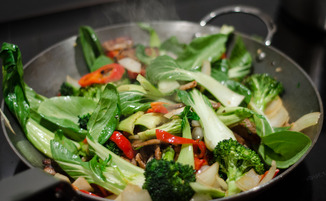
We usually think of fiber as important for keeping our digestion regular. However, did you know fiber is healthy for other reasons? Here are some benefits of fiber and some of my favorite sources:
- Fiber helps you stay fuller, longer. This can help with weight loss goals.
- Fiber helps detox the body of excess hormones, thus can help with hormonal balancing.
- Fiber is great for balancing blood sugar, thus can help prevent and correct imbalances like hypoglycemia and diabetes.
- Fiber helps to sweep the intestines of potentially carcinogenic compounds.
- Fiber can help to feed the beneficial bacteria in your gut (this is called a pre-biotic). Having healthy gut bacteria is of utmost importance to overall health.
- Veggies & Low Sugar Fruits (the best low sugar fruits are berries and they are very high in fiber)
- Ground Chia & Flax seeds in smoothies
- Beans

 RSS Feed
RSS Feed